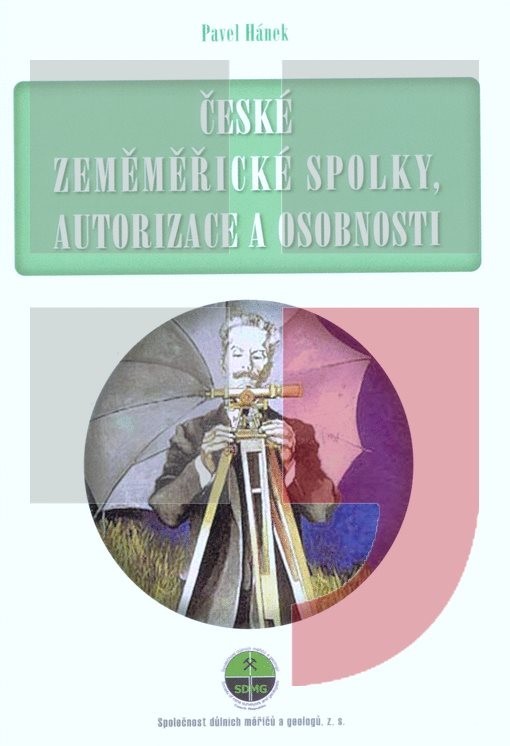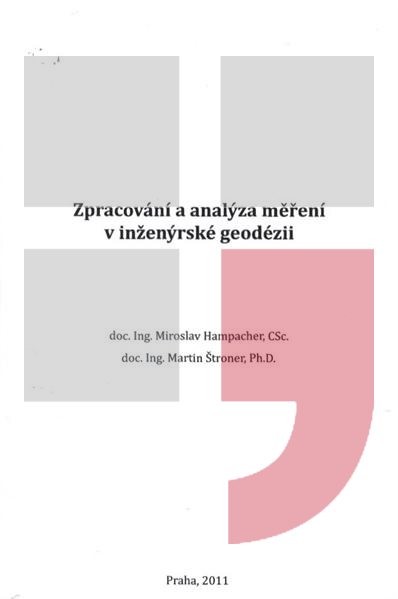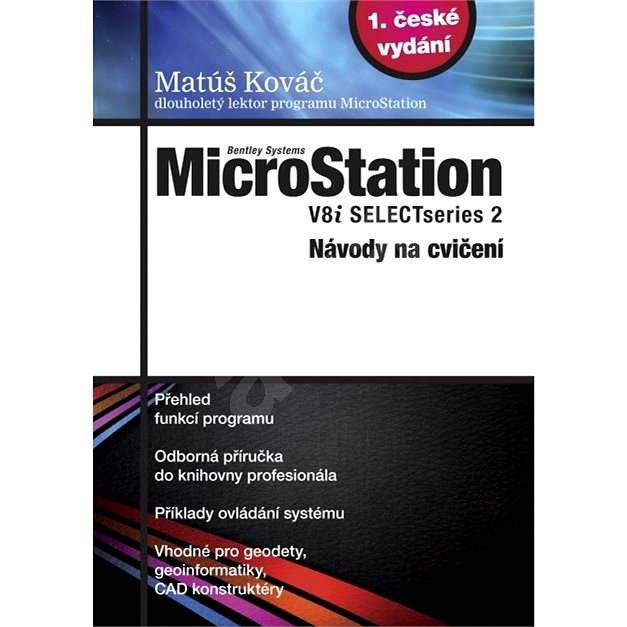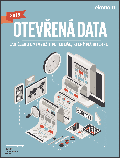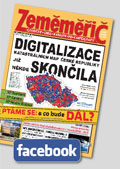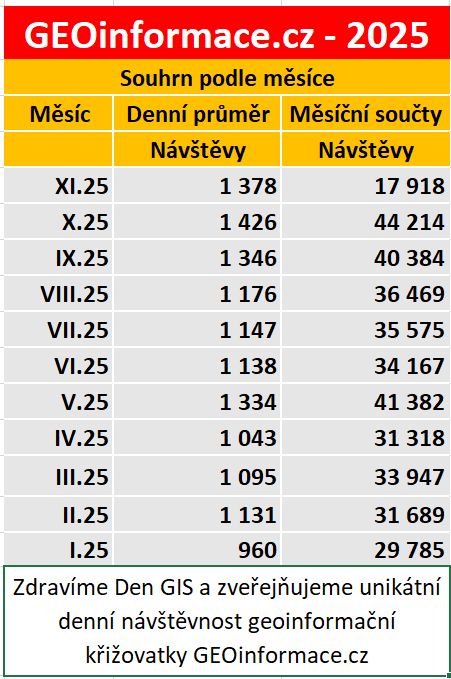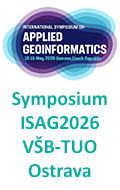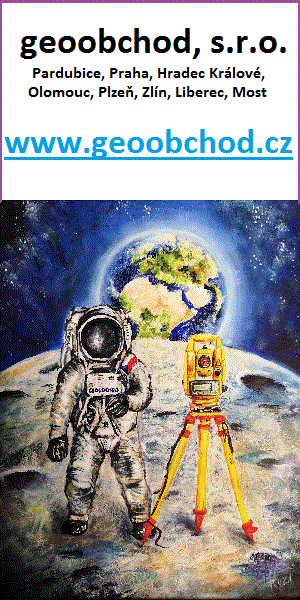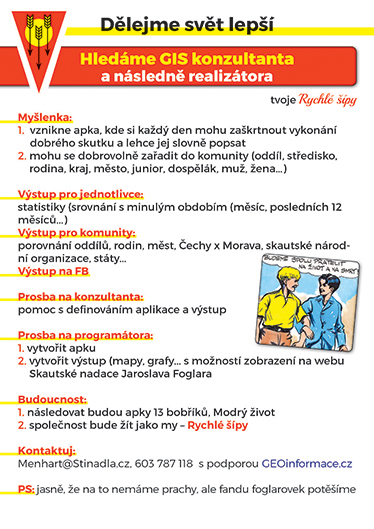zprávy
zdroje zpráv:Alteryx Expands APAC Presence to Amplify Analytics in Japan
16.4.2019 16:18 GISCafe.com Webcasts-Webinars Establishes Office in Tokyo, Invites Customers and Partners to Celebratory Launch EventTOKYO and IRVINE, Calif., April 15, 2019 — …
Juniper Systems Limited Releases Two New Rugged Handheld Computers
16.4.2019 16:18 GISCafe.com Webcasts-Webinars BIRMINGHAM, United Kingdom, April 15, 2019 (GLOBE NEWSWIRE) -- Juniper Systems Limited today announced the release of two new rugged handheld …Trimble First Quarter 2019 Earnings Call and Web Cast
16.4.2019 16:17 GISCafe.com Webcasts-Webinars SUNNYVALE, Calif., April 16, 2019 — (PRNewswire) — Trimble (NASDAQ: TRMB) will hold a conference call on Wednesday, May 1, 2019 at …Wearable AI Market ? Rising adoption of VR/AR based head-mounted device in several verticals is propelling growth of the global market in the near future - Market Research Gazette (Google Maps)
16.4.2019 16:16 GISCafe.com Webcasts-Webinars2019 Innovations in Sensor Stop Signs, Robotic Parking, Hybrid Bus/Tram, Object Tracking, EV Charging, Methanol Fuel Cells, Batteries, Turbocharger Surge, Vibration Measurement, and Optical Sensing - ResearchAndMarkets.com
16.4.2019 16:16 GISCafe.com Webcasts-Webinars DUBLIN — (BUSINESS WIRE) — April 16, 2019 — The "Innovations in Sensor Stop Signs, Robotic Parking, Hybrid Bus/Tram, Object …Skenovali jsme z LiDARu na dronu břehy přehradní hráze ohrožené sesuvy
16.4.2019 16:01 UpVision Minulý týden jsme skenovali z LiDARu na dronu břehy přehradní hráze ohrožené sesuvy pro tvorbu podrobného digitálního modelu terénu a pro periodické sledování lokality.Fotky zde:
https://www.facebook.com/permalink.php?story_fbid=959784934210074&id=199025016952740
What’s behind the ground-breaking 3D habitat map of the Great Barrier Reef?
16.4.2019 13:23 GISCafe.com Webcasts-Webinars April 16, 2019 -- International aquatic remote sensing company EOMAP will showcase its unique contribution to the world-first 3D habitat map of the …Corpis Maps oficiálním partnerem HackPrague 2019
16.4.2019 13:07 T-MAPYThe post Corpis Maps oficiálním partnerem HackPrague 2019 appeared first on T-MAPY spol. s r.o..
Archiv historických plánů hl. m. Prahy
16.4.2019 12:56 Geoportál PrahaV některých aplikacích na geoportálu se objevují různé historické mapy a plány. Podkladové archiválie byly naskenovány a transformovány do souřadnicového systému S-JTSK. Tyto rastry nedosahují vysoké polohové přesnosti, a to především kvůli kvalitě papírových podkladů znehodnocených věkem. Pro ujasnění jsou zde uvedeny základní informace o nich.
Airbus and ZF to develop high precise end-to-end autonomous driving solution
16.4.2019 12:18 GISCafe.com Webcasts-Webinars @AirbusSpace @ZF_GroupFriedrichshafen, 15 April 2019 – Airbus Defence and Space and ZF Friedrichshafen AG, a system provider for …
KAUST wins GSA Special Prize at ERL Emergency Local Tournament 2019
16.4.2019 11:53 European GNSS Agency
A team from the Robotics, Intelligent Systems, and Control (RISC) lab at King Abdullah University of Science and Technology (KAUST) in Saudi Arabia were the lucky winners of the GSA Special Prize at this year’s ERL Emergency Local Tournament, which took place in the fields surrounding the ‘Hacienda de Oran’ in Seville on 18-23 February.
The ERL Emergency Service Robots is a Horizon 2020-funded civilian robotics competition that promotes the development of multi-domain robotic systems for emergency response within the robotics community. The competition requires international teams to survey a scene, collect data, search for specific elements and identify critical hazards, all in a race against the clock.
On February 18-23, teams from international universities and research centres met in Seville to participate in the second ERL Local Tournament, hosted by the Advanced Centre for Aerospace Technologies (CATEC). At the competition, teams of engineers and scientists linked to robotics and unmanned systems presented their latest innovations in the application of these technologies in emergency situations, such as rescue operations, firefighting or natural disasters.
“CATEC was responsible for hosting and organizing this international competition, which was held for the first time in Spain, thanks to its leadership and experience in the development of new technological applications in this field,” said Dr Francisco Javier Pérez Grau, Head of the CATEC Perception & Software Unit. “This event has once again made Andalusia a benchmark for applied research and new innovative developments in robotics and unmanned systems, with a view to their real application in the market.”
A rewarding experience
The GSA special prize targeted robots that make use of solutions based on Galileo and EGNOS. For air robots, the challenge involved both horizontal accuracy in landings and vertical accuracy while hovering at specific geographic coordinates. Land robots were judged on horizontal accuracy during waypoint-based navigation.
The KAUST team, with principal investigator Prof. Jeff Shamma, participated in the air robot challenge and found the experience to be very rewarding. “I am very happy that we made the effort to take part in the tournament. On a personal level it was a very enjoyable experience. But it was also extremely rewarding on a technical level, as the team gained valuable experience in quickly resolving complex problems in the field,” said team leader Kuat Telegenov. “Even preparations for the event were rewarding – as we had to think outside the box to deal with all the issues that arose.”
He said that, initially, the team wasn’t sure if they would participate, because they didn’t have a Galileo-enabled receiver. “But we checked on the UseGalileo.eu website to see which receivers we could use and, in the end, went with a u-blox MAX-M8.”
The team acknowledged the edge that they received from Galileo in terms of accuracy. “We hit our waypoints with an accuracy of around 2.2 meters. We believe that, with GPS alone the accuracy would be about 2.5-3 meters, so we had a significant accuracy gain from Galileo,” Telegenov said.
Prize partnership
For its Special Prize, the GSA partnered with GNSS receiver manufacturer Septentrio, which offered an AsteRx-i S receiver to the winning team. With its size, weight and power consumption, the AsteRx-i S is ideal for applications such as inspection with UAV's, UAS photogrammetry, automation, robotics and logistics.
“Septentrio is proud to support the ERL emergency 2019 competition,” said Septentrio Product Manager Francesca Clemente. “We are driven by a strong customer focus and deep understanding of applications and use cases. Our professional products are not only able to provide reliable and precise positioning but are also easy to integrate and utilise thanks to intuitive web UI, tools and interfaces,” she said, adding: “This makes it ideal for young university teams where performance and ease of use are key to develop new solution in a short time.”
“We congratulate the winning team and we are eager to see the AsteRx-i S integrated their innovative robotics and unmanned solutions!”
About the tournament
The European Robotics League (ERL) is an innovative robot competition that stems from its predecessors - the euRathlon and RoCKIn competitions - and focuses on tasks that robots must execute in realistic emergency situations. The competition is composed of multiple local tournaments, held in different locations across Europe, in addition to a number of major events.
Teams participate in a minimum of two tournaments (local and/or major) per year and get scores based on their performances. Each team’s top two tournament scores are then added together and the teams are ranked based on their cumulative score. Prizes for the top teams are awarded at the following year’s European Robotics Forum (ERF).
Media note: This feature can be republished without charge provided the European GNSS Agency (GSA) is acknowledged as the source at the top or the bottom of the story. You must request permission before you use any of the photographs on the site. If you republish, we would be grateful if you could link back to the GSA website (http://www.gsa.europa.eu).
KAUST wins GSA Special Prize at ERL Emergency Local Tournament 2019
16.4.2019 11:53 European GNSS Agency
A team from the Robotics, Intelligent Systems, and Control (RISC) lab at King Abdullah University of Science and Technology (KAUST) in Saudi Arabia were the lucky winners of the GSA Special Prize at this year’s ERL Emergency Local Tournament, which took place in the fields surrounding the ‘Hacienda de Oran’ in Seville on 18-23 March.
The ERL Emergency Service Robots is a Horizon 2020-funded civilian robotics competition that promotes the development of multi-domain robotic systems for emergency response within the robotics community. The competition requires international teams to survey a scene, collect data, search for specific elements and identify critical hazards, all in a race against the clock.
On March 18-23, teams from international universities and research centres met in Seville to participate in the second ERL Local Tournament, hosted by the Advanced Centre for Aerospace Technologies (CATEC). At the competition, teams of engineers and scientists linked to robotics and unmanned systems presented their latest innovations in the application of these technologies in emergency situations, such as rescue operations, firefighting or natural disasters.
“CATEC was responsible for hosting and organizing this international competition, which was held for the first time in Spain, thanks to its leadership and experience in the development of new technological applications in this field,” said Dr Francisco Javier Pérez Grau, Head of the CATEC Perception & Software Unit. “This event has once again made Andalusia a benchmark for applied research and new innovative developments in robotics and unmanned systems, with a view to their real application in the market.”
A rewarding experience
The GSA special prize targeted robots that make use of solutions based on Galileo and EGNOS. For air robots, the challenge involved both horizontal accuracy in landings and vertical accuracy while hovering at specific geographic coordinates. Land robots were judged on horizontal accuracy during waypoint-based navigation.
The KAUST team, with principal investigator Prof. Jeff Shamma, participated in the air robot challenge and found the experience to be very rewarding. “I am very happy that we made the effort to take part in the tournament. On a personal level it was a very enjoyable experience. But it was also extremely rewarding on a technical level, as the team gained valuable experience in quickly resolving complex problems in the field,” said team leader Kuat Telegenov. “Even preparations for the event were rewarding – as we had to think outside the box to deal with all the issues that arose.”
He said that, initially, the team wasn’t sure if they would participate, because they didn’t have a Galileo-enabled receiver. “But we checked on the UseGalileo.eu website to see which receivers we could use and, in the end, went with a u-blox MAX-M8.”
The team acknowledged the edge that they received from Galileo in terms of accuracy. “We hit our waypoints with an accuracy of around 2.2 meters. We believe that, with GPS alone the accuracy would be about 2.5-3 meters, so we had a significant accuracy gain from Galileo,” Telegenov said.
Prize partnership
For its Special Prize, the GSA partnered with GNSS receiver manufacturer Septentrio, which offered an AsteRx-i S receiver to the winning team. With its size, weight and power consumption, the AsteRx-i S is ideal for applications such as inspection with UAV's, UAS photogrammetry, automation, robotics and logistics.
“Septentrio is proud to support the ERL emergency 2019 competition,” said Septentrio Product Manager Francesca Clemente. “We are driven by a strong customer focus and deep understanding of applications and use cases. Our professional products are not only able to provide reliable and precise positioning but are also easy to integrate and utilise thanks to intuitive web UI, tools and interfaces,” she said, adding: “This makes it ideal for young university teams where performance and ease of use are key to develop new solution in a short time.”
“We congratulate the winning team and we are eager to see the AsteRx-i S integrated their innovative robotics and unmanned solutions!”
About the tournament
The European Robotics League (ERL) is an innovative robot competition that stems from its predecessors - the euRathlon and RoCKIn competitions - and focuses on tasks that robots must execute in realistic emergency situations. The competition is composed of multiple local tournaments, held in different locations across Europe, in addition to a number of major events.
Teams participate in a minimum of two tournaments (local and/or major) per year and get scores based on their performances. Each team’s top two tournament scores are then added together and the teams are ranked based on their cumulative score. Prizes for the top teams are awarded at the following year’s European Robotics Forum (ERF).
Media note: This feature can be republished without charge provided the European GNSS Agency (GSA) is acknowledged as the source at the top or the bottom of the story. You must request permission before you use any of the photographs on the site. If you republish, we would be grateful if you could link back to the GSA website (http://www.gsa.europa.eu).
Quanta UAV, New INS/GNSS to Increase the Productivity of UAV-based Surveying Solutions
16.4.2019 11:26 GISCafe.com Webcasts-Webinars Carrières-sur-Seine, France, April 15th 2019 - SBG Systems will present for the first time at AUVSI’s Xponential show in Chicago (U.S.), …Orbit GT releases 3D Mapping Cloud v19.4 supporting 3D Models and Hybrid Resources
16.4.2019 11:16 GISCafe.com Webcasts-Webinars Lokeren, Belgium, April 8th, 2019 -- Orbit GT releases a new version of its SaaS solution 3DMapping.cloud introducing 3D Models support and …Rada / odborný rada – vedoucí oddělení dokumentace katastru nemovitostí Katastrálního pracoviště Tru
16.4.2019 10:49 ČÚZK - volná místa Katastrální úřad pro Královéhradecký kraj - Katastrální pracoviště Trutnov vypisuje výběrové řízení na místo Rada / odborný rada – vedoucí oddělení dokumentace katastru nemovitostí Katastrálního pracoviště TruRada / odborný rada – vedoucí oddělení dokumentace katastru nemovitostí Katastrálního pracoviště Tru
16.4.2019 10:49 ČÚZK /Urady/Katastralni-urady/Katastralni-urady/Katastralni-urad-pro-Kralovehradecky-kraj/Uredni-deska/Oznameni-a-jina-uredni-sdeleni/Volna-mista/Rada-odborny-rada-–-vedouci-oddeleni-dokumentaceRada / odborný rada – vedoucí oddělení dokumentace katastru nemovitostí Katastrálního pracoviště Tru
16.4.2019 10:49 ČÚZK - předpisy a opatření Katastrální úřad pro Královéhradecký kraj - Katastrální pracoviště Trutnovvypisuje výběrové řízení na místo
Rada / odborný rada – vedoucí oddělení dokumentace katastru nemovitostí Katastrálního pracoviště Trutnov
Call for media
16.4.2019 10:26 ESA Observing the Earth
ESA invites media representatives to join the Living Planet Symposium to hear first-hand from scientists about recent environmental discoveries and the latest hard facts on climate change
Rozšířili jsme naši leteckou „flotilu“
16.4.2019 10:22 HrdličkaNaši „flotilu“ bezpilotních letadel jsme rozšířili o model SenseFly, typ eBee plus, který váží pouhých 1,15 kg. Můžeme tak oficiálně nabídnout naše služby pro zamýšlený účel letu: letecké práce – ve smyslu ust. § 73 leteckého zákona letecké činnosti pro vlastní potřebu – ve smyslu ust. § 76 leteckého zákona Letecké snímkování umožňuje rychlý a... View Article
The post Rozšířili jsme naši leteckou „flotilu“ appeared first on HRDLIČKA spol. s r.o. - komplexní služby v oblasti geodézie.
Rozšířili jsme naší leteckou „flotilu“
16.4.2019 10:22 HrdličkaNaší „flotilu“ bezpilotních letadel jsme rozšířili o model SenseFly, typ eBee plus, který váží pouhých 1,15 kg. Můžeme tak oficiálně nabídnout naše služby pro zamýšlený účel letu: letecké práce – ve smyslu ust. § 73 leteckého zákona letecké činnosti pro vlastní potřebu – ve smyslu ust. § 76 leteckého zákona. Letecké snímkování umožňuje rychlý a... View Article
The post Rozšířili jsme naší leteckou „flotilu“ appeared first on HRDLIČKA spol. s r.o. - komplexní služby v oblasti geodézie.
ArcRevue 1+2/2019
16.4.2019 9:40 ARCDATAPrávě jsme publikovali aktuální vydání – dvojčíslo časopisu ArcRevue – ve formátu PDF. Naleznete v něm uživatelské články týkající se služeb DMR a RÚIAN dostupných na geoportálu ČÚZK, o hlukovém mapování, digitální mapě Opavy nebo třeba o záchraně tropických želv. Technologické články se věnují novinkám v ArcGIS Pro a na ArcGIS Online, nástrojům pro práci s daty katastru nemovitostí, aplikaci pro sledování stavu systému ArcGIS Monitor a mnoha dalším tématům.
Svůj názor na ArcRevue nám pak můžete zaslat prostřednictvím on-line dotazníku. Zajímá nás, co si o časopisu myslíte a co by se dalo zlepšit. Budeme proto moc rádi, pokud nám zanecháte jakoukoliv zpětnou vazbu.
20190416-VŘ ředitel KP Jindřichův Hradec
16.4.2019 8:41 ČÚZK - předpisy a opatření Český úřad zeměměřický a katastrální zveřejnil novou aktualitu: Oznámení o vyhlášení výběrového řízení na služební místo ředitele Katastrálního pracoviště Jindřichův Hradec.20190416-VŘ ředitel KP Jindřichův Hradec
16.4.2019 8:41 ČÚZK /Aktuality-resort/2019/20190416-VR-reditel-KP-Jindrichuv-HradecNové StoryMaps mohou změnit to, jak chápeme webové mapy
16.4.2019 8:03 GISportal.cz
StoryMaps vznikly před sedmi lety jako uživatelsky jednoduchý nástroj na tvorbu vizuálně zajímavých webových prezentací, které kombinují mapy (vytvořené v ArcGIS Online – AGOL) s textem, fotografiemi a videi. Za tu dobu jich uživatelé vytvořili téměř 750 milionů. Nyní Esri představila novou verzi tohoto populárního nástroje, který využívají nejen GIS odborníci, ale i studenti či […]
The post Nové StoryMaps mohou změnit to, jak chápeme webové mapy appeared first on GISportal.cz.
Reálná dopravní data ŘSD pro studentské projekty
16.4.2019 8:02 GeoBusiness Dopravní fakulta Univerzity Pardubice se spojila s Ředitelstvím silnic a dálnic a vysokoškoláci mohou pro své projekty používat aktuální data z informačních systémů ŘSD. Společný ... PřečístSonda BepiColombo je připravena na dlouhou cestu
16.4.2019 8:00 Český Kosmický PortálPo sérii testů provedených přímo ve vesmíru v uplynulých pěti měsících zakončila společná mise ESA a JAXA komisní fázi svého letu a nyní je připravena na operace, které bude provádět během dlouhého přeletu. Následně pak i na průzkum planety Merkur.
Sonda BepiColombo je připravena na dlouhou cestu
16.4.2019 8:00 Český Kosmický PortálPo sérii testů provedených přímo ve vesmíru v uplynulých pěti měsících zakončila společná mise ESA a JAXA komisní fázi svého letu a nyní je připravena na operace, které bude provádět během dlouhého přeletu. Následně pak i na průzkum planety Merkur.
Evidence ISVS voda spravované VÚV TGM, v,v,i,
16.4.2019 2:00 Cenia - Katalog metadat ČR - INSPIRE VÚV TGM,v,v,i, je pověřen k vedení celkem deseti evidencí o stavu povrchových a podzemních vod a k předávání údajů z těchto evidencí do informačních systémů veřejné správy:*evidence vodních útvarů včetně silně ovlivněných vodních útvarů a umělých vodních útvarů*evidence stavu vodních útvarů*evidence ekologického potenciálu silně ovlivněných a umělých vodních útvarů*evidence chráněných oblasti přirozené akumulace vod*evidence ochranných pásem vodních zdrojů*evidence ciltivých oblastí*evidence zranitelných oblastí*evidence oblastí povrchových vod využívaných ke koupání*evidence povrchových vod, které jsou nebo se mají stát trvale vhodnými pro život a reprodukci původních druhů ryb a dalších vodních živočichů*evidence záplavových územíPozemkové úpravy jsou jedinečným nástrojem, pomáhají krajině i rozvoji venkova
16.4.2019 0:00 Státní pozemkový úřad Hluboká nad Vltavou, 10. - 11. dubna 2019 – Státní pozemkový úřad (SPÚ) pořádá každoročně Konferenci pozemkových úprav, na které nad aktuálními tématy v této oblasti společně diskutují zástupci obcí a další zájemci o pozemkové úpravy, zemědělci, odborníci, projektanti, zhotovitelé, ale i široká veřejnost. Letošní, již XXI. ročník konference s podtitulem „Nové výzvy do dalších období“, se konal pod záštitou ministra zemědělství Miroslava Tomana v Hluboké nad Vltavou. Všichni přítomní se shodli, že pozemkové úpravy jsou jedinečným nástrojem a je třeba, aby je stát nadále podporoval jak legislativně, tak především finančně.Mapy.cz umí nově navigovat v pruzích a ukáží i rychlostní limity
15.4.2019 22:21 GISportal.cz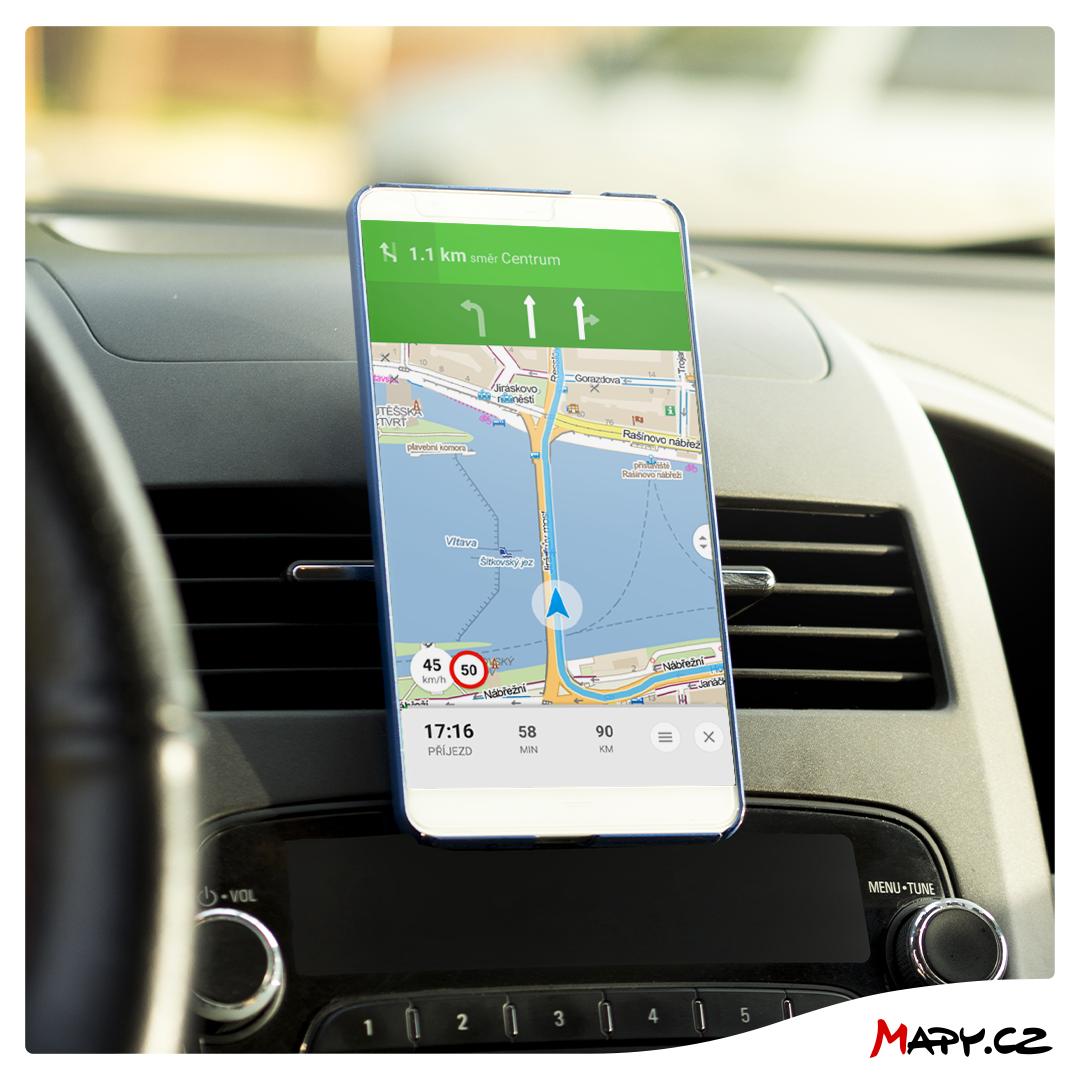
Oblíbená česká mobilní navigace Mapy.cz, kterou zatím používali především turisté, a to s ohledem na jejich kvalitní outdoorové mapy a možnosti offline navigace, nyní cílí i na motoristy. V nové verzi představené před pár dny se objevilo hned několik novinek, kterými jsou: navigace ve více pruzích – hodí se hlavně v komplikovanějších křižovatkách zobrazení povolené […]
The post Mapy.cz umí nově navigovat v pruzích a ukáží i rychlostní limity appeared first on GISportal.cz.
TerrAvion Partners With Skymatics to Help Alleviate the Pain of Crop Damage
15.4.2019 18:39 GISCafe.com Webcasts-Webinars SAN LEANDRO, Calif., April 15, 2019 (GLOBE NEWSWIRE) -- TerrAvion, the leading aerial imagery provider for the agricultural industry, is excited to …The drone services market size is expected to grow from USD 4.4 billion in 2018 to USD 63.6 billion by 2025, at a CAGR of 55.9%
15.4.2019 18:38 GISCafe.com Webcasts-Webinars Increasing use of drone services for industry-specific solutions is the major factor for the growth of the global drone services market.NEW YORK, …
XYO and BULVRD Partner to Pay Consumers to Map Out Traffic Hazards
15.4.2019 18:38 GISCafe.com Webcasts-Webinars Unique Multi-Point Independent Validation--Powered by XYO Technology--Improves Data Accuracy, User Experience
SAN DIEGO — (BUSINESS …
20190415-GaKO-4-2019
15.4.2019 15:13 ČÚZK - předpisy a opatření Český úřad zeměměřický a katastrální zveřejnil novou aktualitu: Aktuální číslo Geodetického a kartografického obzoru (4/2019) je k dispozici ke stažení.
Nové číslo GaKO
15.4.2019 14:30
ÚGKK SR
Nové číslo časopisu Geodetického a Kartografického Obzoru 4/2019
Byli jsme součástí studentské soutěže GISáček 2019
15.4.2019 14:14 HrdličkaDíky pravidelnému partnerství této konference mohl letos do poroty zasednout Mgr. Tomáš Kadeřábek – vedoucí oddělení mapového serveru. A jak Tomáš tuto akci hodnotí? „U studentů mě kromě perfektních prezentačních schopností potěšilo také zapálení pro obor a nebojácnost ve zkoumání nových postupů a technologií (např. hodnocení webových aplikací pomocí eye-trackingu, nebo skriptování a tvorba vlastních... View Article
The post Byli jsme součástí studentské soutěže GISáček 2019 appeared first on HRDLIČKA spol. s r.o. - komplexní služby v oblasti geodézie.
Mapy.cz mají nově navigaci v pruzích
15.4.2019 14:06 GeoBusiness Máme strašnou radost z toho, že vám ulehčíme orientaci v pruzích 👏 K tomu vás budeme informovat i o tom, jaká je maximální povolená ... PřečístJan Cibulka uspěl se získáním dat z pražské dopravy
15.4.2019 13:34 GeoBusiness Data pražského přepravního průzkumu z let 2009 až 2015 Datový novinář Jan Cibulka na svém twitterovém účtu informoval, že „po čtyřech letech, dvou správních žalobách, ... PřečístGaKO 4/2019
15.4.2019 13:15 GaKO GaKO 4/2019 ZÁPOTOCKÝ, M.–VRANOVÁ, S.: Použitie participatívneho prístupu v podpore stanovenia rekreačného potenciálu krajiny s využitím GIS HONTI, R.: Polo-automatizovaná segmentácia rovínStát chce dát na dopravní stavby 233 miliard korun
15.4.2019 13:08 GeoBusiness Deník E15.cz informoval, že český stát plánuje nejpozději do roku 2020 zahájit nebo dokončit 145 velkých dopravních staveb za téměř 233 miliard korun. Téměř ... PřečístOdborný referent/vrchní referent – zápisy v řízení V a Z – ZRVZ0604
15.4.2019 12:50 ČÚZK /Urady/Katastralni-urady/Katastralni-urady/Katastralni-urad-pro-Plzensky-kraj/Uredni-deska/Oznameni-a-jina-uredni-sdeleni/Volna-mista/Odborny-referent-vrchni-referent-–-zapisy-v-rizeniOdborný referent/vrchní referent – zápisy v řízení V a Z – ZRVZ0604
15.4.2019 12:50 ČÚZK - volná místa Katastrální úřad pro Plzeňský kraj - Katastrální pracoviště Klatovy vypisuje výběrové řízení na místo Odborný referent/vrchní referent – zápisy v řízení V a Z – ZRVZ0604Odborný referent/vrchní referent – zápisy v řízení V a Z – ZRVZ0604
15.4.2019 12:50 ČÚZK - předpisy a opatření Katastrální úřad pro Plzeňský kraj - Katastrální pracoviště Klatovyvypisuje výběrové řízení na místo
Odborný referent/vrchní referent – zápisy v řízení V a Z – ZRVZ0604
seznam k. ú. s probíhající obnovou KO novým mapováním nebo revízí údajů KN
15.4.2019 12:44 ČÚZK - předpisy a opatření Katastrální úřad pro Moravskoslezský kraj - Katastrální pracoviště Bruntál zveřejnil novou aktualitu: Katastrální pracoviště Bruntál informuje vlastníky a jiné oprávněné a zároveň odbornou veřejnost, že v rámci jeho územní působnosti probíhá obnova operátu novým mapováním a je prováděna revize údajů katastru nemovitostí.Seznam katastrálních území s probíhající obnovou katastrálního operátu novým mapováním v roce 2020:
Karlov pod Pradědem,
Karlovice ve Slezsku,
Malá Morávka,
Světlá ve Slezsku.
Seznam katastrálních území s probíhající revizí údajů katastru v roce 2020:
Bruntál-město,
Ludvíkov pod Pradědem.
Podrobnosti k jednotlivým činnostem jsou uvedeny v oznámeních na úředních deskách obecního úřadu a katastrálního pracoviště.
seznam k. ú. s probíhající obnovou KO novým mapováním nebo revízí údajů KN
15.4.2019 12:44 ČÚZK - předpisy a opatření Katastrální úřad pro Moravskoslezský kraj - Katastrální pracoviště Bruntál zveřejnil novou aktualitu: Katastrální pracoviště Bruntál informuje vlastníky a jiné oprávněné a zároveň odbornou veřejnost, že v rámci jeho územní působnosti probíhá obnova operátu novým mapováním a je prováděna revize údajů katastru nemovitostí.Seznam katastrálních území s probíhající obnovou katastrálního operátu novým mapováním:
Ryžoviště,
Karlovice ve Slezsku,
Malá Morávka,
Karlov pod Pradědem.
Seznam katastrálních území s probíhající revizí údajů katastru:
Železná pod Pradědem.
Podrobnosti k jednotlivým činnostem jsou uvedeny v oznámeních na úředních deskách obecního úřadu a katastrálního pracoviště.
seznam k. ú. s probíhající obnovou KO novým mapováním nebo revízí údajů KN
15.4.2019 12:44 ČÚZK - předpisy a opatření Katastrální úřad pro Moravskoslezský kraj - Katastrální pracoviště Bruntál zveřejnil novou aktualitu: Katastrální pracoviště Bruntál informuje vlastníky a jiné oprávněné a zároveň odbornou veřejnost, že v rámci jeho územní působnosti probíhá obnova operátu novým mapováním a je prováděna revize údajů katastru nemovitostí.Seznam katastrálních území s probíhající obnovou katastrálního operátu novým mapováním v roce 2022:
Horní Město
Horní Životice
Malá Morávka,
Mirotínek,
Nové Purkartice,
Světlá ve Slezsku.
Seznam katastrálních území s probíhající revizí údajů katastru v roce 2022:
Bruntál-město.
Podrobnosti k jednotlivým činnostem jsou uvedeny v oznámeních na úředních deskách obecního úřadu a katastrálního pracoviště.
seznam k. ú. s probíhající obnovou KO novým mapováním nebo revízí údajů KN
15.4.2019 12:44 ČÚZK - předpisy a opatření Katastrální úřad pro Moravskoslezský kraj - Katastrální pracoviště Bruntál zveřejnil novou aktualitu:Seznam katastrálních území s probíhající obnovou katastrálního operátu novým mapováním:
Ryžoviště (termín dokončení - 11/2019)
Karlovice ve Slezsku (termín dokončení - 10/2021)
Malá Morávka (termín dokončení - 11/2021)
Seznam katastrálních území s probíhající revizí údajů katastru:
Železná pod Pradědem (termín dokončení - 11/2019)
seznam k. ú. s probíhající obnovou KO novým mapováním nebo revízí údajů KN
15.4.2019 12:44 ČÚZK - předpisy a opatření Katastrální úřad pro Moravskoslezský kraj - Katastrální pracoviště Bruntál zveřejnil novou aktualitu: Katastrální pracoviště Bruntál informuje vlastníky a jiné oprávněné a zároveň odbornou veřejnost, že v rámci jeho územní působnosti probíhá obnova operátu novým mapováním a je prováděna revize údajů katastru nemovitostí.Seznam katastrálních území s probíhající obnovou katastrálního operátu novým mapováním v roce 2021:
Horní město
Karlov pod Pradědem,
Karlovice ve Slezsku,
Malá Morávka,
Mirotínek,
Nové Purkartice,
Světlá ve Slezsku.
Seznam katastrálních území s probíhající revizí údajů katastru v roce 2021:
Bruntál-město.
Podrobnosti k jednotlivým činnostem jsou uvedeny v oznámeních na úředních deskách obecního úřadu a katastrálního pracoviště.
seznam k. ú. s probíhající obnovou KO novým mapováním nebo revízí údajů KN
15.4.2019 12:44 ČÚZK - předpisy a opatření Katastrální úřad pro Moravskoslezský kraj - Katastrální pracoviště Bruntál zveřejnil novou aktualitu:Seznam katastrálních území s probíhající obnovou katastrálního operátu novým mapováním:
Ryžoviště (termín dokončení - 11/2019)
Karlovice ve Slezsku (termín dokončení - 10/2021)
Malá Morávka (termín dokončení - 11/2021)
Karlov pod Pradědem (termín dokončení - 06/2022)
Seznam katastrálních území s probíhající revizí údajů katastru:
Železná pod Pradědem (termín dokončení - 11/2019)
seznam k. ú. s probíhající obnovou KO novým mapováním nebo revízí údajů KN
15.4.2019 12:44 ČÚZK - předpisy a opatření Katastrální úřad pro Moravskoslezský kraj - Katastrální pracoviště Bruntál zveřejnil novou aktualitu: Seznam katastrálních území s probíhající obnovou katastrálního operátu novým mapováním:Ryžoviště (termín dokončení - 11/2019)
Karlovice ve Slezsku (termín dokončení - 10/2021)
Malá Morávka (termín dokončení - 11/2021)
Karlov pod Pradědem (termín dokončení - 06/2022)
Seznam katastrálních území s probíhající revizí údajů katastru:
Železná pod Pradědem (termín dokončení - 11/2019)
seznam k. ú. s probíhající obnovou KO novým mapováním nebo revízí údajů KN
15.4.2019 12:44 ČÚZK - předpisy a opatření Katastrální úřad pro Moravskoslezský kraj - Katastrální pracoviště Bruntál zveřejnil novou aktualitu: Katastrální pracoviště Bruntál informuje vlastníky a jiné oprávněné a zároveň odbornou veřejnost, že v rámci jeho územní působnosti probíhá obnova operátu novým mapováním a je prováděna revize údajů katastru nemovitostí.Seznam katastrálních území s probíhající obnovou katastrálního operátu novým mapováním v roce 2024:
Horní Město
Horní Václavov
Horní Životice
Světlá ve Slezsku
Tvrdkov
Seznam katastrálních území s probíhající revizí údajů katastru v roce 2024:
Adamov u Karlovic
Břidličná
Rejchartice
Rýmařov
Podrobnosti k jednotlivým činnostem jsou uvedeny v oznámeních na úředních deskách obecního úřadu a katastrálního pracoviště.
seznam k. ú. s probíhající obnovou KO novým mapováním nebo revízí údajů KN
15.4.2019 12:44 ČÚZK /Urady/Katastralni-urady/Katastralni-urady/Katastralni-urad-pro-Moravskoslezsky-kraj/Katastralni-pracoviste/KP-Bruntal/O-uradu/Aktuality/seznam-k-u-s-probihajici-obnovou-KO-novym-mapovaseznam k. ú. s probíhající obnovou KO novým mapováním nebo revízí údajů KN
15.4.2019 12:44 ČÚZK - předpisy a opatření Katastrální úřad pro Moravskoslezský kraj - Katastrální pracoviště Bruntál zveřejnil novou aktualitu: Katastrální pracoviště Bruntál informuje vlastníky a jiné oprávněné a zároveň odbornou veřejnost, že v rámci jeho územní působnosti probíhá obnova operátu novým mapováním a je prováděna revize údajů katastru nemovitostí.Seznam katastrálních území s probíhající obnovou katastrálního operátu novým mapováním:
Ryžoviště (termín dokončení - 11/2019)
Karlovice ve Slezsku (termín dokončení - 10/2021)
Malá Morávka (termín dokončení - 11/2021)
Karlov pod Pradědem (termín dokončení - 06/2022)
Seznam katastrálních území s probíhající revizí údajů katastru:
Železná pod Pradědem (termín dokončení - 11/2019)
Podrobnosti k jednotlivým činnostem jsou uvedeny v oznámeních na úředních deskách obecního úřadu a katastrálního pracoviště.
seznam k. ú. s probíhající obnovou KO novým mapováním nebo revízí údajů KN
15.4.2019 12:44 ČÚZK /Urady/Katastralni-urady/Katastralni-urady/Katastralni-urad-pro-Moravskoslezsky-kraj/Katastralni-pracoviste/KP-Bruntal/O-uradu/Aktuality/seznam-k-u-s-probihajici-obnovou-KO-novym-mapovaseznam k. ú. s probíhající obnovou KO novým mapováním nebo revízí údajů KN
15.4.2019 12:44 ČÚZK - předpisy a opatření Katastrální úřad pro Moravskoslezský kraj - Katastrální pracoviště Bruntál zveřejnil novou aktualitu: Katastrální pracoviště Bruntál informuje vlastníky a jiné oprávněné a zároveň odbornou veřejnost, že v rámci jeho územní působnosti probíhá obnova operátu novým mapováním a je prováděna revize údajů katastru nemovitostí.Seznam katastrálních území s probíhající obnovou katastrálního operátu novým mapováním v roce 2025:
Horní Město
Horní Václavov
Horní Životice
Světlá ve Slezsku
Seznam katastrálních území s probíhající revizí údajů katastru v roce 2025:
Bílčice
Břidličná
Jiříkov u Rýmařova
Májůvka
Podlesí pod Pradědem
Rejchartice
Stránské
Těchanov
Žďárský Potok
Podrobnosti k jednotlivým činnostem jsou uvedeny v oznámeních na úředních deskách obecního úřadu a katastrálního pracoviště.
seznam k. ú. s probíhající obnovou KO novým mapováním nebo revízí údajů KN
15.4.2019 12:44 ČÚZK - předpisy a opatření Katastrální úřad pro Moravskoslezský kraj - Katastrální pracoviště Bruntál zveřejnil novou aktualitu: Katastrální pracoviště Bruntál informuje vlastníky a jiné oprávněné a zároveň odbornou veřejnost, že v rámci jeho územní působnosti probíhá obnova operátu novým mapováním a je prováděna revize údajů katastru nemovitostí.Seznam katastrálních území s probíhající obnovou katastrálního operátu novým mapováním v roce 2023:
Horní Město
Horní Životice
Světlá ve Slezsku
Tvrdkov
Seznam katastrálních území s probíhající revizí údajů katastru v roce 2023:
Edrovice
Jamartice
Janovice u Rýmařova
Rýmařov
Podrobnosti k jednotlivým činnostem jsou uvedeny v oznámeních na úředních deskách obecního úřadu a katastrálního pracoviště.
seznam k. ú. s probíhající obnovou KO novým mapováním nebo revízí údajů KN
15.4.2019 12:44 ČÚZK - předpisy a opatření Katastrální úřad pro Moravskoslezský kraj - Katastrální pracoviště Bruntál zveřejnil novou aktualitu: Katastrální pracoviště Bruntál informuje vlastníky a jiné oprávněné a zároveň odbornou veřejnost, že v rámci jeho územní působnosti probíhá obnova operátu novým mapováním a je prováděna revize údajů katastru nemovitostí.Seznam katastrálních území s probíhající obnovou katastrálního operátu novým mapováním:
Karlovice ve Slezsku,
Malá Morávka,
Karlov pod Pradědem.
Seznam katastrálních území s probíhající revizí údajů katastru:
Podrobnosti k jednotlivým činnostem jsou uvedeny v oznámeních na úředních deskách obecního úřadu a katastrálního pracoviště.
Dvě miliardy v programu Doprava 2020+: Podpořen má být také BIM
15.4.2019 11:26 GeoBusiness Ministerstvo dopravy podpoří výzkum a inovace v dopravě dvěma miliardami, žádat o ně bude možné od června 2019. Chytrá dopravní infrastruktura, provoz autonomních vozidel ... PřečístFirma TKP geo certifikovaným dodavatelem ČEZ Energoservisu
15.4.2019 11:03 GeoBusiness Společnost TKP geo s.r.o. na svém webu oznámila, že se stala kvalifikovaným dodavatelem s oprávněním k poskytování služeb v oblastech inženýrské geodézie a metrologie, ... PřečístInvitation to tender: EGNOS service for payment and liability-critical applications in the road sector
15.4.2019 10:53 European GNSS Agency
Under what conditions would it be beneficial to implement an EGNOS service for payment and liability critical applications in the road sector in the 2025-2035 timeframe?
EGNOS is the European SBAS and augments GPS L1 C/A civilian signal by providing corrections and integrity information for positioning and navigation applications over Europe. The next generation of EGNOS, EGNOS V3, will augment GPS and Galileo constellations in the L1 and L5 bands and will extend the service area to the entire landmasses of EU member states.
This project aims at assessing under what conditions it would be beneficial to implement an EGNOS V3 service for payment and liability critical applications in the road sector until 2035.
Pay-as-you-drive (PAYD) and pay-how-you-drive (PHYD) insurances are emerging applications in the road sector that rely on how much, where, when and how the road user drives to tailor the premiums paid by the policyholder. Other road applications such as reconstruction of accidents, mobility as a service, traffic infraction monitoring and fine management, traffic congestion monitoring, automatic charging in car parks, etc. may also in the future rely on the vehicle’s position and navigation data to offer services to car drivers.
Liability and payment-critical applications such as the ones described above are highly sensitive to undetected GNSS underperformance, non-availability or large errors since significant legal or economic consequences for the service or application provider may occur. In fact, a mismatch of the vehicle’s current speed together with erroneous position data may impact the user charging associated with the driving paths, skills and habits of the road user. Afterwards, it becomes very difficult for end users to claim that they are being overcharged or for service providers to avoid undercharging their customers.
The analysis shall focus on the identification of user and service requirements, the development of an appropriate integrity concept and the definition of the service provision scheme. The On-Board Unit (OBU) shall integrate the E-GNSS receiver together with other sensors necessary to trust the position in situations where enforcement, payments and related claims are involved.
The study will be fully financed by the European Commission under the H2020 framework programme for research and innovation, within the budget allocated to the evolution of EGNOS mission. The European GNSS Agency (GSA) will be in charge of the technical supervision of the project on behalf of the European Commission.
More information about the Invitation to tender can be found here.
Media note: This feature can be republished without charge provided the European GNSS Agency (GSA) is acknowledged as the source at the top or the bottom of the story. You must request permission before you use any of the photographs on the site. If you republish, we would be grateful if you could link back to the GSA website (http://www.gsa.europa.eu).
Navigační signál pro řidiče bude nově dostupný také v brněnských tunelech
15.4.2019 10:26 GeoBusiness Ředitelství silnic a dálnic společně s izraelskou společností Waze (založenou v roce 2009, koupenou v červnu 2013 firmou Google za 1,3 miliardy dolarů) připravuje v brněnských ... PřečístRada /odborný rada v oddělení aktualizace a dokumentace katastru nemovitostí Katastrálního pracovišt
15.4.2019 9:13 ČÚZK - volná místa Katastrální úřad pro Královéhradecký kraj - Katastrální pracoviště Náchod vypisuje výběrové řízení na místo Rada /odborný rada v oddělení aktualizace a dokumentace katastru nemovitostí Katastrálního pracovištOdborný rada v oddělení aktualizace a dokumentace katastru nemovitostí Katastrálního pracoviště Nách
15.4.2019 9:13 ČÚZK /Urady/Katastralni-urady/Katastralni-urady/Katastralni-urad-pro-Kralovehradecky-kraj/Uredni-deska/Oznameni-a-jina-uredni-sdeleni/Volna-mista/Odborny-rada-v-oddeleni-aktualizace-a-dokumentaceOdborný rada v oddělení aktualizace a dokumentace katastru nemovitostí Katastrálního pracoviště Nách
15.4.2019 9:13 ČÚZK - volná místa Katastrální úřad pro Královéhradecký kraj - Katastrální pracoviště Náchod vypisuje výběrové řízení na místo Odborný rada v oddělení aktualizace a dokumentace katastru nemovitostí Katastrálního pracoviště NáchRada /odborný rada v oddělení aktualizace a dokumentace katastru nemovitostí Katastrálního pracovišt
15.4.2019 9:13 ČÚZK - předpisy a opatření Katastrální úřad pro Královéhradecký kraj - Katastrální pracoviště Náchodvypisuje výběrové řízení na místo
Rada /odborný rada v oddělení aktualizace a dokumentace katastru nemovitostí Katastrálního pracoviště Náchod
Odborný rada v oddělení aktualizace a dokumentace katastru nemovitostí Katastrálního pracoviště Nách
15.4.2019 9:13 ČÚZK - předpisy a opatření Katastrální úřad pro Královéhradecký kraj - Katastrální pracoviště Náchodvypisuje výběrové řízení na místo
Odborný rada v oddělení aktualizace a dokumentace katastru nemovitostí Katastrálního pracoviště Náchod
Rada /odborný rada v oddělení aktualizace a dokumentace katastru nemovitostí Katastrálního pracovišt
15.4.2019 9:13 ČÚZK /Urady/Katastralni-urady/Katastralni-urady/Katastralni-urad-pro-Kralovehradecky-kraj/Uredni-deska/Oznameni-a-jina-uredni-sdeleni/Volna-mista/Odborny-rada-v-oddeleni-aktualizace-a-dokumentaceRozpočet úřadu za rok 2019
15.4.2019 8:53 ČÚZK - předpisy a opatření Katastrální úřad pro Jihomoravský krajvystavuje rozpočet úřadu za rok
2019
Rozpočet úřadu za rok 2019
15.4.2019 8:53 ČÚZK /Urady/Katastralni-urady/Katastralni-urady/Katastralni-urad-pro-Jihomoravsky-kraj/Rozpocet/Rozpocet-uradu-za-rok-2019Ředitel Katastrálního pracoviště Jindřichův Hradec
15.4.2019 8:11 ČÚZK - předpisy a opatření Katastrální úřad pro Jihočeský kraj - Katastrální pracoviště Jindřichův Hradecvypisuje výběrové řízení na místo
Ředitel Katastrálního pracoviště Jindřichův Hradec
Ředitel Katastrálního pracoviště Jindřichův Hradec
15.4.2019 8:11 ČÚZK /Urady/Katastralni-urady/Katastralni-urady/Katastralni-urad-pro-Jihocesky-kraj/Uredni-deska/Oznameni-a-jina-uredni-sdeleni/Volna-mista/Reditel-Katastralniho-pracoviste-Jindrichuv-HradecŘeditel Katastrálního pracoviště Jindřichův Hradec
15.4.2019 8:11 ČÚZK - volná místa Katastrální úřad pro Jihočeský kraj - Katastrální pracoviště Jindřichův Hradec vypisuje výběrové řízení na místo Ředitel Katastrálního pracoviště Jindřichův HradecNepotřebný majetek - výběrové řízení
15.4.2019 6:29 ČÚZK /Urady/Katastralni-urady/Katastralni-urady/Katastralni-urad-pro-Liberecky-kraj/Nabidky-majetku/Nepotrebny-majetek-vyberove-rizeni-(2)Nepotřebný majetek - výběrové řízení
15.4.2019 6:29 ČÚZK - předpisy a opatřeníKatastrální úřad pro Liberecký kraj nabízí nepotřebný majetek k odkupu. Jedná se o
Nepotřebný majetek - výběrové řízení
Citlivé oblasti
15.4.2019 2:00 Cenia - Katalog metadat ČR - INSPIRE Evidence obsahuje údaje o vymezení citlivých oblastí v ČR, Údaje evidence zpracovává a do informačního systému veřejné správy ukládá Výzkumný ústav vodohospodářský T. G. Masaryka, veřejná výzkumná instituce. Citlivé oblasti jsou vodním zákonem definovány jako vodní útvary povrchových vod: a) v nichž dochází nebo v blízké budoucnosti může dojít v důsledku vysoké koncentrace živin k nežádoucímu stavu jakosti vod, b) které jsou využívány nebo se předpokládá jejich využití jako zdroje pitné vody, v níž koncentrace dusičnanů přesahuje hodnotu 50 mg/l, nebo c) u nichž je z hlediska zájmů chráněných tímto zákonem nutný vyšší stupeň čištění odpadních vod. Citlivé oblasti vymezuje vláda nařízením. Vymezení citlivých oblastí podléhá přezkoumání v pravidelných intervalech nepřesahujících 4 roky, Pro citlivé oblasti a pro vypouštění odpadních vod do povrchových vod ovlivňujících kvalitu vody v citlivých oblastech stanovuje vláda nařízením ukazatele přípustného znečištění odpadních vod a jejich hodnoty. Citlivé oblasti jsou aktuálně stanoveny nařízením vlády č, 401/2015 Sb, o ukazatelích a hodnotách přípustného znečištění povrchových vod a odpadních vod, náležitostech povolení k vypouštění odpadních vod do vod povrchových a do kanalizací a o citlivých oblastech. Podle § 15 odst, 1 nařízení vlády č, 401/2015 Sb, ve znění pozdějších předpisů jsou všechny povrchové vody na území České republiky vymezeny jako citlivé oblasti.FD - Prostorová data pro předběžné vyhodnocení povodňových rizik v povodí Dunaje (PFRA)
15.4.2019 2:00 Cenia - Katalog metadat ČR - INSPIRE Hodnocení minulých povodní bylo založeno na informacích, které jsou o těchto povodních dostupné. V ČR je současný způsob dokumentace a vyhodnocení povodní upraven §76 vodního zákona. Zprávy o povodních zpracovávají povodňové orgány obcí a správci vodních toků, souhrnnou zprávu za povodí zpracovávají správci povodí a souhrnnou hodnotící zprávu, včetně analýzy rozsahu a výše povodňových škod a účelnosti provedených opatření, zpracovávají povodňové orgány krajů. Evidenci vyhodnocených povodní zajišťují správci povodí. Evidenci povodní z hlediska hydrologického, včetně meteorologických údajů o příčinách přirozených povodní, zajišťuje Český hydrometeorologický ústav (ČHMÚ). Významné povodně, které zasáhly rozsáhlá území a způsobily značné škody a ztráty na lidských životech, byly počínaje povodní v roce 1997 vyhodnocovány v rámci komplexních projektů, zpracovaných na základě usnesení vlády ČR a financovaných s podporou státního rozpočtu. Tímto způsobem byly vyhodnoceny povodně v červenci 1997, v srpnu 2002, v březnu až dubnu 2006, přívalové povodně v červnu až červenci 2009, povodně v květnu až červnu 2010 a v srpnu 2010. Zprávy o starších povodních již nejsou úplné a systematicky vedené, Pokud byly zaznamenány ve stanicích pozorovacích sítí ČHMÚ, jsou jejich hydrologické charakteristiky uloženy v databázích ústavu. Zpravidla však již nejsou k dispozici úplné údaje o důsledcích povodní, rozsahu a výši celkových povodňových škod. Zprávy za ucelená povodí jsou uloženy u státních podniků Povodí, většinou i s informacemi o povodňových škodách na tocích a vodohospodářských objektech. Dále jsou pro některé povodně k dispozici zprávy povodňových orgánů územních celků (obcí a krajů).Území zvláštní povodně pod vodním dílem Kunratický Horní rybník (jev ÚAP č. 53)
15.4.2019 2:00 Cenia - Katalog metadat ČR - INSPIRE Území ohrožené zvláštní povodní je území, které může být při vzniku zvláštní povodně zaplavené vodou. Vymezuje se kulminační hladinou při zvláštní povodni a ve směru po toku končí v profilu, kde kulminační průtok zvláštní povodně poklesne na hodnotu průtoku přirozené povodně s dobou opakování 100 let (Q100 ), který vymezuje záplavové území. Jejich rozsah se vymezí v krizovém plánu v souladu s krizovým zákonem.FD - Prostorová data pro předběžné vyhodnocení povodňových rizik (PFRA)
15.4.2019 2:00 Cenia - Katalog metadat ČR - INSPIRE Hodnocení minulých povodní bylo založeno na informacích, které jsou o těchto povodních dostupné, V ČR je současný způsob dokumentace a vyhodnocení povodní upraven §76 vodního zákona. Zprávy o povodních zpracovávají povodňové orgány obcí a správci vodních toků, souhrnnou zprávu za povodí zpracovávají správci povodí a souhrnnou hodnotící zprávu, včetně analýzy rozsahu a výše povodňových škod a účelnosti provedených opatření, zpracovávají povodňové orgány krajů. Evidenci vyhodnocených povodní zajišťují správci povodí. Evidenci povodní z hlediska hydrologického, včetně meteorologických údajů o příčinách přirozených povodní, zajišťuje Český hydrometeorologický ústav (ČHMÚ). Významné povodně, které zasáhly rozsáhlá území a způsobily značné škody a ztráty na lidských životech, byly počínaje povodní v roce 1997 vyhodnocovány v rámci komplexních projektů, zpracovaných na základě usnesení vlády ČR a financovaných s podporou státního rozpočtu, Tímto způsobem byly vyhodnoceny povodně v červenci 1997, v srpnu 2002, v březnu až dubnu 2006, přívalové povodně v červnu až červenci 2009, povodně v květnu až červnu 2010 a v srpnu 2010. Zprávy o starších povodních již nejsou úplné a systematicky vedené. Pokud byly zaznamenány ve stanicích pozorovacích sítí ČHMÚ, jsou jejich hydrologické charakteristiky uloženy v databázích ústavu. Zpravidla však již nejsou k dispozici úplné údaje o důsledcích povodní, rozsahu a výši celkových povodňových škod. Zprávy za ucelená povodí jsou uloženy u státních podniků Povodí, většinou i s informacemi o povodňových škodách na tocích a vodohospodářských objektech. Dále jsou pro některé povodně k dispozici zprávy povodňových orgánů územních celků (obcí a krajů).Jak využívat metodu BIM ve své práci? Seminář HSI pro geodety i projektanty
14.4.2019 21:02 GeoBusiness Pokud hledáte softwarové nástroje pro práci dle BIM nebo si ještě nejste jisti, co BIM obnáší a potřebujete vědět více, tak můžete přijít na ... PřečístPCI Geomatics announces educational campaign in Brazil
14.4.2019 10:09 GISCafe.com Webcasts-Webinars MARKHAM, Ontario, Canada, April 11, 2019 - PCI Geomatics, a world leading developer of remote sensing and photogrammetric software and systems, …"New Rugged Lightweight Tablets from DT Research" by Susan Smith
14.4.2019 10:05 GISCafe.com Webcasts-WebinarsGoogle's Sensorvault Is a Boon for Law Enforcement. This Is How It Works. - The New York Times (Google Maps)
13.4.2019 9:00 GISCafe.com Webcasts-Webinars27. ročník středoevropské geografické konference
13.4.2019 7:00 Česká asociace pro geoinformace17. listopadu 2019 se v Brně na Pedagogické fakultě MUNI uskuteční 27. ročník středoevropské geografické konference na téma (Výuka) regionální geografie na VŠ, SŠ a ZŠ.
Více informací naleznete na webových stránkách akce.
17. listopadu 2019 se v Brně na Pedagogické fakultě MUNI uskuteční 27. ročník středoevropské geografické konference na téma (Výuka)
Pozvánka na 8. uživatelské fórum Copernicus
13.4.2019 7:00 Česká asociace pro geoinformaceVe dnech 25. a 26. června proběhne v Praze v Lichtenštejnském paláci již 8. české uživatelské fórum Copernicus. Konference pro uživatelskou komunitu programu Evropské komise, Evropské kosmické agentury a partnerů pro monitoring životního prostředí a bezpečnosti Copernicus se v České republice koná již od roku 2012 za účelem propojení širokého spektra uživatelů
Orgastický požitek – video dokumentující letošní aprílové Mapy.cz
12.4.2019 22:07 GeoBusiness Ačkoliv některé softwarové firmy svým zaměstnancům zakázaly, aby prvního dubna kdokoliv publikoval vtipné aprílové zprávy, v českém Seznamu naopak šli proti proudu a aprílovou ... PřečístJakub byl opět porotcem mezinárodní soutěže Drone Hero 2019 v Amsterdamu
12.4.2019 21:01 UpVision Tento týden byl Jakub opět porotcem mezinárodní soutěže inovativních projektů s drony Drone Hero 2019 v rámci Commercial UAV Expo 2019 v Amsterdamu.Velice zajímavé vítězné projekty jsou k prohlédnutí zde:
https://www.dronecommunity.biz/drone-hero-europe/winners-2019/
Smart city, 3D vizualizace, správa majetku obcí… témata konference Mapy jsou pro každého
12.4.2019 18:28 GeoBusiness Letošní ročník konference Mapy jsou pro každého se bude konat začátkem června v Přírodním parku Melechov. Finální program akce, která se uskuteční ve dnech ... PřečístGlobal Augmented Reality (AR) and Virtual Reality (VR) Market in Healthcare Market to Reach $11.14 Billion by 2025
12.4.2019 17:22 GISCafe.com Webcasts-Webinars FREMONT, California, April 12, 2019 — (PRNewswire) — According to the new market intelligence report by BIS Research, titled "Global …Hexagon Announces Completion of Thermopylae Sciences and Technology Acquisition and Related One-off Items in First Quarter 2019
12.4.2019 17:21 GISCafe.com Webcasts-Webinars NACKA STRAND, Sweden, April 12, 2019 — (PRNewswire) — Hexagon AB, a global leader in digital solutions, today announces the completion …Getting ready to chart sea level
12.4.2019 15:38 ESA Observing the Earth
Records show that, on average, global sea level rose by 3.2 mm a year between 1993 and 2018, but hidden within this average is the fact that the rate of rise has been accelerating over the last few years. Taking measurements of the height of the sea surface is essential to monitoring this worrying trend – and the Copernicus Sentinel-6 mission is on the way to being ready to do just this.
Program páté konference BIM ve stavebnictví
12.4.2019 14:48 GeoBusiness Koncem května se v Praze uskuteční již pátý ročník konference BIM ve stavebnictví 2019 – BIM v rámci digitálního Česka. Konference BIM ve stavebnictví ... PřečístWatch our Galileo smartphone app award and vote for your winner
12.4.2019 14:40 ESA Navigation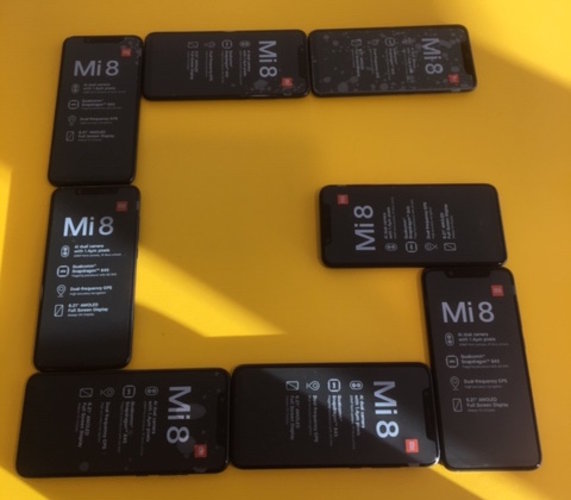
On Thursday 18 April, you are cordially invited to view the final presentations of ESA’s second Galileo smartphone app competition – to develop an app capable of performing fixes using raw Galileo satnav measurements – as well as put your own vote in for your favourite.
Watch our Galileo smartphone app award and vote for your winner
12.4.2019 14:40 ESA Navigation
On Thursday 18 April, you are cordially invited to view the final presentations of ESA’s second Galileo smartphone app competition – to develop an app capable of performing fixes using raw Galileo satnav measurements – as well as put your own vote in for your favourite.
Načo sceľovať vlastníctvo, keď sa neskorším dedením aj tak rozdrobí?
12.4.2019 14:19 Komora pozemkových úprav SRMá za súčasného stavu vôbec význam púšťať sa do pozemkových úprav? Nemali by sme najprv zmeniť dedičské zákony? Nemali. A pokúsime sa vysvetliť prečo.
Načo sceľovať vlastníctvo, keď sa neskorším dedením aj tak rozdrobí?
12.4.2019 14:19 Komora pozemkových úprav SRMá za súčasného stavu vôbec význam púšťať sa do pozemkových úprav? Nemali by sme najprv zmeniť dedičské zákony?
Pracovní pozice na akademii věd
12.4.2019 11:09 Katedra geoinformatiky UP OlomoucKolegové z Ústavu informatiky AV ČR, v.v.i., nabízejí pracovní pozici na projektu „Urbanizace předpovědi počasí, kvality ovzduší a klimatických scénářů pro Prahu“. Více o pozici zde.
The post Pracovní pozice na akademii věd appeared first on Katedra geoinformatiky.
OGC Requests Information on Earth Observation Big Data Architecture
12.4.2019 10:59 GISCafe.com Webcasts-Webinars Organizations are invited to provide feedback on the draft Earth Observation Cloud Applications architecture, and express their interest in joining …Hemisphere GNSS Announces Strategic Partnership with C-Nav® Positioning Solutions, a Division of Oceaneering International, Inc.
12.4.2019 10:18 GISCafe.com Webcasts-Webinars Southampton, UK – April 10, 2019 – From Ocean Business 2019 in Southampton, UK, Hemisphere GNSS, Inc. (Hemisphere) is …OGC leads Geospatial Track at ApacheCon NA 2019
12.4.2019 10:10 GISCafe.com Webcasts-Webinars Call for presentations outlining Apache projects that include geospatial data and processing closes May 13th.10 April 2019: The Open Geospatial …
Earth from Space
12.4.2019 10:05 ESA Observing the Earth
This week's edition features the busy maritime traffic passing through the English Channel
English Channel
12.4.2019 10:05 ESA Observing the Earth
Earth observation image of the week: the Copernicus Sentinel-1 mission takes us over the busy maritime highways of the English Channel
Alteryx Announces Date of First Quarter 2019 Financial Results Release
12.4.2019 9:00 GISCafe.com Webcasts-Webinars IRVINE, Calif., April 11, 2019 — (PRNewswire) — Alteryx, Inc. (NYSE: AYX), revolutionizing business through data science and …The European Market for Drone Logistics & Transportation - Forecast to 2027: Anticipated to Grow at a CAGR of 61% - ResearchAndMarkets.com
12.4.2019 9:00 GISCafe.com Webcasts-Webinars DUBLIN — (BUSINESS WIRE) — April 11, 2019 — The "Europe Drone Logistics & Transportation Market to 2027 - Regional Analysis and …Společnost Bio-Nexus v insolvenčním řízení
12.4.2019 8:51 GISportal.cz
Společnost Bio-Nexus, která stojí za Cleerio, je v insolvenčním řízení (před rozhodnutím o úpadku), kvůli tomu, že několika svým zaměstnancům dluží na mzdě. Jestli bude následovat kdysi slavnou společnost Geodis Brno, či se zachrání se teprve ukáže.
The post Společnost Bio-Nexus v insolvenčním řízení appeared first on GISportal.cz.
Společnost Bio-Nexus v insolvenčním řízení
12.4.2019 8:51 GISportal.cz
Společnost Bio-Nexus, která do loňského roku spravovala Cleerio, je v insolvenčním řízení (před rozhodnutím o úpadku), kvůli tomu, že několika svým zaměstnancům dluží na mzdě. Jestli bude následovat kdysi slavnou společnost Geodis Brno, či se zachrání se teprve ukáže.
The post Společnost Bio-Nexus v insolvenčním řízení appeared first on GISportal.cz.
Změna cen software a služeb společnosti GISOFT (12.4.2019)
12.4.2019 8:24 GISoftV souvislosti s rozšiřováním funkcí našeho software jsme se po 8 letech rozhodli navýšit cenu některých našich produktů a jejich roční podpory (Předplatné aktualizací). Nové ceny naleznete v našem ceníku.
Změna cen software a služeb společnosti GISOFT (12.4.2019)
12.4.2019 8:24 GISoftV souvislosti s rozšiřováním funkcí našeho software jsme se po 8 letech rozhodli navýšit cenu některých našich produktů a jejich roční podpory (Předplatné aktualizací). Nové ceny naleznete v našem ceníku.
Změna cen software a služeb společnosti Bentley Systems (12.4.2019)
12.4.2019 8:01 GISoftSpolečnost Bentley Systems navýšila ceny svých softwarových produktů a poplatků za jejich podporu (službu Bentley SELECT) o cca. 3,83%. Změna cen softwarových produktů je platná od tohoto měsíce, změna poplatků za službu Bentley SELECT se uživatelům projeví k datu prodloužení jejich smlouvy v poplatcích na následující období. Nové ceny naleznete v našem ceníku.
Změna cen software a služeb společnosti Bentley Systems (12.4.2019)
12.4.2019 8:01 GISoftSpolečnost Bentley Systems navýšila ceny svých softwarových produktů a poplatků za jejich podporu (službu Bentley SELECT) o cca. 3,83%. Změna cen softwarových produktů je platná od tohoto měsíce, změna poplatků za službu Bentley SELECT se uživatelům projeví k datu prodloužení jejich smlouvy v poplatcích na následující období. Nové ceny naleznete v našem ceníku.
Space Race Hackathon v Olomouci
12.4.2019 7:53 Katedra geoinformatiky UP OlomoucPřijď si zahackovat na vesmírný hackathon v Olomouci a oslav tak s námi 50. výročí jedné z nejodvážnějších misí v historii – Moon Landing👩🚀🌒🌓🌔 Jak? Během 48 hodin vytvoř vlastní projekt na některou z výzev, třeba právě na moon challenge🌙, přesvědč porotu na pódiu Academia Film Olomouc 54 a vyhraj 10 000 CZK 💰💰💰, cestu […]
The post Space Race Hackathon v Olomouci appeared first on Katedra geoinformatiky.
Zveřejnění obsahu informací poskytnutých na žádost dle zákona č. 106/1999 Sb. za rok 2019
12.4.2019 7:37 ČÚZK - předpisy a opatření Zeměměřický a katastrální inspektorát v Brnězveřejňuje obsah informace poskytnutých na žádost dle zákona č. 106/1999 Sb. za rok
2019
Zveřejnění obsahu informací poskytnutých na žádost dle zákona č. 106/1999 Sb. za rok 2019
12.4.2019 7:37 ČÚZK /Urady/Zememericke-a-katastralni-inspektoraty/Zememericke-a-katastralni-inspektoraty/Zememericky-a-katastralni-inspektorat-v-Brne/Casto-hledane-informace/Poskytovani-informaci-106-1999-Sb/Zverejneni-obsahu-informaci-poskytnutych-na-za-(1)/Zverejneni-obsahu-informaci-poskytnutych-na-zadostGeodynamické monitorování
12.4.2019 2:00 Cenia - Katalog metadat ČR - INSPIRE Geodynamické monitorování - 1) pohybů povrchu na základě GNSS pozorování na permanentní stanici KNOS v Novém Kostele a formou opakovaných kampaní v síti 26 bodů; 2) změn hladiny podzemní vody v západních Čechách z permanentních měření ve třech vrtech na Chebsku.4D gramivetrie - vulkanická aktivita
12.4.2019 2:00 Cenia - Katalog metadat ČR - INSPIRE Digitální záznamy změn zemské tíže z oblasti Řecka (Nisyros, Thira) pozorované na základě opakovaných ročních měření v gravimetrické síti.Náklonová data
12.4.2019 2:00 Cenia - Katalog metadat ČR - INSPIRE Digitální záznamy náklonů zemského povrchu na observatořích Příbram, Sklaná, Jezeří.New Mexico Community College, NM Museum of Natural History and NM State Parks Partner to Document One of Largest Dinosaur Tracksites in US
11.4.2019 21:15 GISCafe.com Webcasts-Webinars Students to use high-tech imaging equipment to help create improved record of tracksite for scientific analysis and educationALBUQUERQUE, N.M., …




